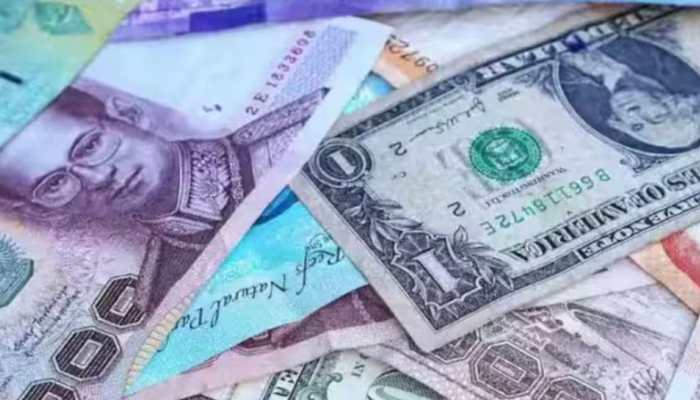Synopsis: India’s foreign exchange reserves dropped by $2.06 billion to $686.06 billion in the week ending May 2, marking the end of an eight-week rise. The fall is attributed to a dip in gold reserves and likely RBI intervention to stabilize the weakening Rupee.
After eight consecutive weeks of growth, India’s foreign exchange reserves (forex) saw a reversal, falling by USD 2.06 billion to USD 686.06 billion for the week ending May 2, according to the latest data released by the Reserve Bank of India (RBI).
The previous week, ending April 25, had recorded a healthy gain of USD 1.983 billion, taking the reserves to USD 688.129 billion. This sudden shift is seen as part of the RBI’s ongoing efforts to stabilize the Indian Rupee, which is now hovering near its all-time low against the US Dollar.
In detail, foreign currency assets (FCAs)—the largest component of forex reserves—increased by USD 514 million, reaching USD 581.177 billion. FCAs include the effects of appreciation or depreciation of non-US currencies like the Euro, Yen, and Pound against the dollar.
However, gold reserves took a significant hit, falling by USD 2.545 million to USD 81.82 billion. Additionally, Special Drawing Rights (SDRs)—held with the International Monetary Fund (IMF)—also dropped by USD 30 million, closing at USD 18.558 billion for the week.
This drop follows a pattern seen in 2022, when India’s reserves shrank by USD 71 billion, contrasting with an increase of USD 58 billion in 2023. So far in 2024, the forex reserves have grown by a modest USD 20 billion.
Forex reserves are crucial as they serve as a buffer against external shocks, with the RBI estimating they can cover 10–12 months of imports. The central bank uses these reserves to manage currency volatility—buying dollars when the Rupee is strong and selling them when it weakens, maintaining liquidity in the market.
While the decline is relatively minor in the larger picture, it reflects the dynamic pressures on the Indian economy, especially amid global uncertainties and currency fluctuations.
Disclaimer: This article is for informational purposes only and does not constitute financial or investment advice. Readers are encouraged to refer to official RBI updates and consult financial experts for decisions involving foreign exchange or currency investments.


)

